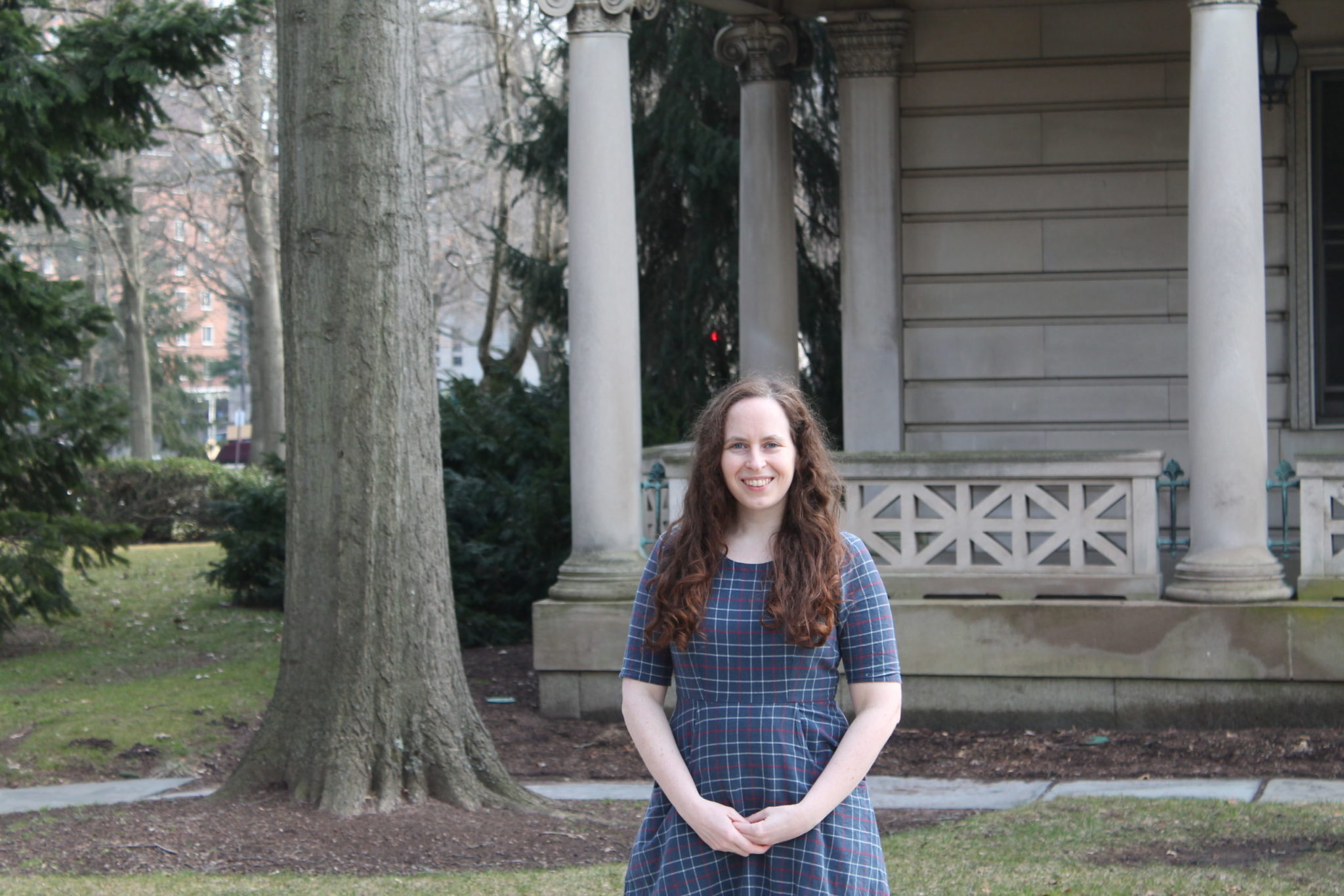Rachael Roettenbacher named 51 Pegasi b Fellow
Astronomy postdoctoral fellow Rachael Roettenbacher named 51 Pegasi b fellow by the Heising-Simons Foundation.

Courtesy of Rachael Roettenbacher
Rachael Roettenbacher, a postdoctoral fellow at the Yale Center for Astronomy and Astrophysics, was named a 51 Pegasi b Fellow by the Heising-Simons Foundation at the end of last month.
The 51 Pegasi b Fellowship provides postdoctoral scientists with financial support to conduct research over a three-year period in theoretical, observational and experimental astronomy, according to the Heising-Simons Foundation’s website. The fellowship was established in 2017 and is named after the first exoplanet discovered orbiting a Sun-like star. At Yale, each 51 Pegasi b fellow is assigned a faculty advisor to work with during their research project. Debra Fischer, professor of astronomy, is Roettenbacher’s faculty advisor.
Roettenbacher was named a 2021 fellow along with seven other scientists. Her research focuses on studying new techniques used to observe signals from distant stars and whether these signals are preventing astronomers from spotting exoplanets orbiting these stars.
“The goal is to find earth-like planets around Sun-like stars,” Roettenbacher told the News. “These stars have spots and have activity on them, and so that can actually cause a signature that does mimic the signature of the planet, so it can cause a problem [such as causing] your data to look like you have a planet when you don’t. I’m going to take my interferometric images of the star, so we know exactly what the surface of the star looks like, and we can compare that to the observations that we get from the EXPRES [Extreme Precision Spectrometer] spectrograph.”
Roettenbacher arrived at Yale in 2018 as a Yale Center for Astronomy and Astrophysics Prize Postdoctoral Fellow. Fischer told the News that she was familiar with Roettenbacher’s doctoral work at the University of Michigan and found it to be “incredibly innovative.”
In her research, Roettenbacher uses various techniques to image spots on the surface of Sun-like stars, but interferometry is the most relevant method for the research she will be conducting as a 51 Pegasi b fellow. She explained that this technique uses a number of different telescopes that work together to perform as a single telescope that is as large as the distance between them.
To capture these stellar signals, Roettenbacher will be using the Center for High Angular Resolution Astronomy, or CHARA, array located in Mount Wilson, California, which consists of six one-meter telescopes dispersed across 330 meters. Interferometry allows the astronomers to use the telescopes in unison, essentially creating a telescope that is 330 meters wide, according to Roettenbacher.
Using this technique, astronomers can accurately detect features on the surfaces of stars. They can see the stars “resolved” in terms of their size and “little features” on the star’s surface, Roettenbacher explained.
“[We can] essentially take a picture of [the star],” she said. “So the method that I use is the sort of equivalent to taking a picture of the stellar surface. I am going to be using this information together with observations from the [EXPRES], which is a Yale resource that Debra Fischer and the Astronomy Department built.”
EXPRES collects spectroscopic data –– information from visible light split into its electromagnetic wavelengths. Roettenbacher explained that after this light is split, the “deficiencies,” or absorption lines, in it are visible. These lines are related to the elements of the star from which the light is emitted. Using these absorption lines, astronomers can observe the periodic “wobble” that a planet exerts on its star as they rotate around a shared center of mass. These wobbles signal to astronomers that there is a planet orbiting the star.
Fischer explained that the measurement precision of EXPRES is “record-breaking,” but that EXPRES cannot determine the fraction of the reflex velocities coming from the surface of the star, making it difficult to determine if it is seeing the movement of the star itself or that of a planet close to it. But Roettenbacher’s data will provide other researchers with detailed imaging of the surfaces of these stars, so astronomers will be able to distinguish between movement at the level of the star’s surface and that of an exoplanet.
“We’re using the spectrograph that my team built and combining that data with the surface maps that [Roettenbacher] gets,” Fischer said. “The surface maps give us the answer in the back of the book for telling us where the velocity noise or scatter is coming in, and then the goal is to disentangle those noise sources that we measure on the star. Then we essentially rip across this curtain, which finally allows us to see planets like the Earth at distances from their host star where water might pool on the surface, and they might be habitable worlds.”
According to Roettenbacher, the project will officially begin when the teams at the telescopes gather sufficient data, which she hopes will be in the fall. At the moment, she is writing the results of the pilot study for publication with data from October and November from CHARA and EXPRES.
Gregory Laughlin, professor of astronomy and astrophysics, who served as a 51 Pegasi b faculty advisor in 2017, told the News how important Roettenbacher’s work is to exoplanet research.
“NASA is considering various space missions that will be dedicated to looking for extrasolar planets and those missions can cost hundreds of millions of dollars,” Laughlin said. “And, as we look towards more advanced missions, an improved view of the stars and an improved understanding of the stellar activity is actually absolutely critical to make sure that these even billion-dollar investments are being made for the right technology, so I see the primary practical use of [Roettenbacher’s] research is in guiding the kinds of high-dollar space missions that will be flying in the next 10 to 20 years.”
The exoplanet 51 Pegasi b was discovered on Oct. 6, 1995.
Nicole Rodriguez | nicole.rodriguez.nr444@yale.edu
Correction, Apr. 20: An earlier version of this article contained an incorrect quote from Rachael Roettenbacher, in which the term “interferometric” was mis-represented as “inner parametric.” The story has been updated.









